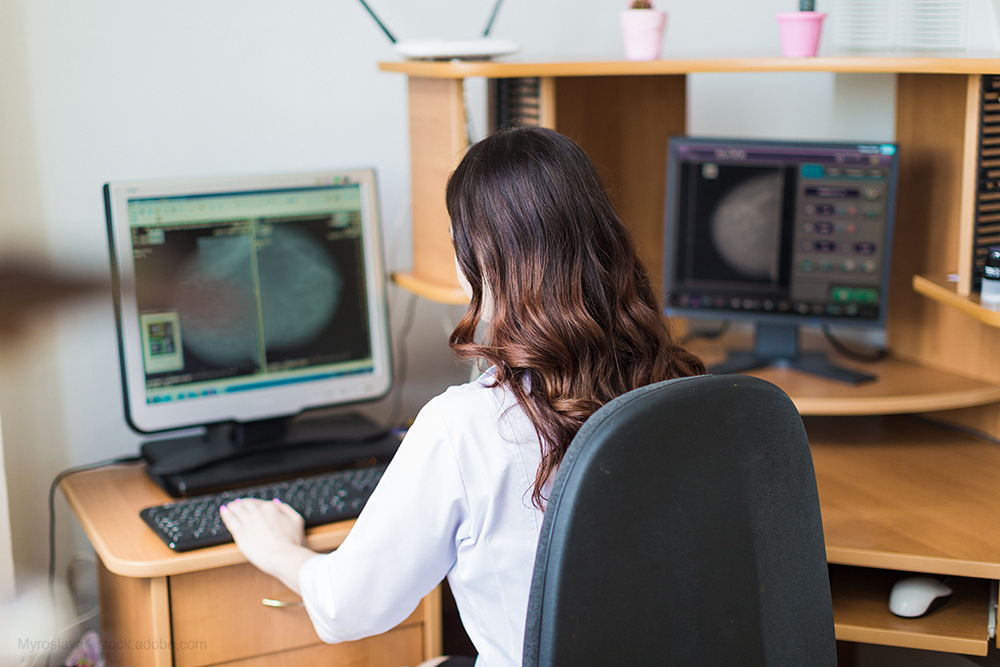Dense Breast Reporting Regulations Increasing
New laws and research are changing how dense breast notifications are happening.

For the past several years, states have slowly been enacting laws that require radiologists to alert women, as part of their mammography results, if they have dense breast tissue. Legislation adoption has been slow, but steady, even though there’s been little definitive clarity about the impact of providing this information.
Recent research efforts, though, are beginning to shed light on how taking steps to inform women that their dense breast tissue puts them at greater breast cancer risk is actually affecting clinical practice and patient care. According to the National Cancer Institute, approximately 43% of women have dense breast tissue, so this information and testing could potentially affect millions of women nationwide.
Thirty-seven states already had breast density notification laws. But, in February, Congress passed a law, requiring every state to include the notifications with all mammography results. And, several other states, including Massachusetts, Michigan, Missouri, and Rhode Island, are going a step further. In addition to informing a woman she has dense breast tissue, these letters are also including detailed information about-and recommendations for-additional screening tests, such as ultrasound and MRI.
Adding in these suggestions seems to be having a small impact already. In a new study published in the American Journal of Public Health, researchers from Yale University School of Public Health and School of Medicine discovered that including additional screening recommendations does create a slight increase in the number of cancers diagnosed and treated. Out of 1.4 million mammograms performed on 1.2 million women who underwent mammography, they found an additional 10.5 individuals per 1,000 followed up with breast ultrasound. As a result, 0.37 more breast cancers were detected.
Related article: Regularly Screened Patients with Breast Cancer Have Lower Mortality Rates
Conversely, there was no uptick in breast ultrasound utilization in states that did not include the additional testing suggestions. The study also found no changes in clinical practice in those states.
Separate research also confirmed that implementing dense breast notification laws does, in fact, increase the number of women who seek follow-up care. Based on the findings of a recent article published in the Journal of General Internal Medicine from Harvard Medical School, supplemental breast ultrasound use did rise post-legislation. Prior to the notification law, 8.5 percent of women sought out imaging to clarify their mammography results. After states began requiring the notification, women’s utilization of additional imaging rose 3.3 percent.
But, not all research supports the positive impact of supplemental ultrasound. Other new investigations counter the benefit of the slight increase in new cancer detection. According to research from the University of Washington published in JAMA Internal Medicine, adding supplemental breast ultrasound to mammography results in more false-positive biopsies than mammography alone, 52 and 22.2 per 1,000 screens, respectively. In fact, the study found the short-term follow-up rate for women who receive supplemental imaging increased by 28%.
However, cancer detection rates are virtually the same-5.4 and 5.5 per 1,000 women. As a result, investigators say, there’s a question of whether the added cost associated with supplemental ultrasound is justifiable, especially because supplemental imaging, on average, costs more than a mammogram.
With these conflicting research findings, investigators suggested that additional work is needed to identify which subgroups of women could potentially benefit the most from undergoing additional supplemental screening.
Until then, though, despite the continued concerns about how many new cancers are identified and how many women might undergo unnecessary additional testing for benign findings, investigators across the board are reaching one similar conclusion. Clinicians should still take advantage of dense breast notifications and treat them as an opportunity to discuss screening options with their patients, as well as the potential benefits and risks of additional imaging.
New AI-Enabled Portable Ultrasound May Facilitate 50 Percent Reduction in Cardiac Imaging Scan Time
March 28th 2025Artificial intelligence (AI)-powered measurement capabilities provide key features with the Compact Ultrasound 5500CV device, which was unveiled at the American College of Cardiology (ACC) conference.
Can Ultrasound-Based Radiomics Enhance Differentiation of HER2 Breast Cancer?
March 11th 2025Multicenter research revealed that a combined model of clinical factors and ultrasound-based radiomics exhibited greater than a 23 percent higher per patient-level accuracy rate for identifying HER2 breast cancer than a clinical model.